Dystopian Books: 7 Common Myths Debunked
Dystopian literature captivates readers with its imaginative worlds and thought-provoking themes. “The Children of Men” by P.D. Dystopian books challenge us to reflect on our world and inspire action towards a more equitable and hopeful future. Works like George Orwell’s “1984” and Aldous Huxley’s “Brave New World” are staples of adult literature, demonstrating that dystopian themes resonate with readers of all ages.
Myth 3: Dystopian Books Are All the Same
Fact: The genre encompasses a diverse array of themes and styles.
It’s a common misconception that all dystopian books share similar plots and settings. In this article, we will explore seven common myths about dystopian books, providing facts and explanations to debunk them.
-
Myth 1: Dystopian Books Are Just About the Future
Fact: Dystopian stories can be set in both the future and alternative realities. good dystopian novels
While many dystopian novels envision bleak futures, others depict fictional societies that exist parallel to our own. For instance, “Parable of the Sower” by Octavia Butler addresses climate change, inequality, and social breakdown, reflecting pressing issues in our contemporary society.
Another important aspect is that john Mandel, which explores life after a pandemic, offer glimpses of hope and community amidst despair.
-
Myth 6: Dystopian Books Are Purely Fictional
Fact: Dystopian literature often reflects real-world issues and concerns.
Many authors draw inspiration from historical events, political climates, and social issues. John Mandel involves a wide range of ages, emphasizing that the fight for survival and understanding of society is not limited to youth.
-
Myth 7: Dystopian Books Are Simply Escapism
Fact: Dystopian literature encourages critical thinking about society. Le Guin present bleak settings but also feature characters who strive for change and a better future, ultimately imparting messages of hope amid despair.
-
Myth 3: All Dystopian Novels Depict Totalitarian Regimes
Fact: Dystopian societies can take many forms.
Though many classic dystopian novels portray totalitarian governments, the genre is not limited to this framework.
In this article, we will debunk seven common myths about dystopian series books, providing the facts and explanations behind them.
-
Myth 1: Dystopian Books Are Just for Young Adults
Fact: Dystopian literature appeals to readers of all ages.
While many popular dystopian series, such as “The Hunger Games” and “Divergent,” target young adults, the genre has a rich history that includes classics like George Orwell’s “1984” and Aldous Huxley’s “Brave New World.” These works address profound themes that resonate with adult readers, making dystopian literature a versatile genre.
-
Myth 2: All Dystopian Stories Have a Happy Ending
Fact: Many dystopian narratives conclude on a somber note.
Contrary to popular belief, not all dystopian stories wrap up neatly with a happy ending. Characters frequently embark on journeys of self-discovery and resistance, inspiring readers to envision a better future.
-
Myth 6: Dystopian fiction lacks realism.
Critics may argue that dystopian fiction is unrealistic; however, many scenarios are grounded in plausible developments based on current societal trends. These narratives invite readers to consider the implications of their choices and the value of individual freedom, pushing beyond mere survival to engage with profound existential inquiries.
-
Myth 7: Dystopian Literature Is Pessimistic
Fact: Dystopian stories often convey messages of hope and the potential for change.
Despite their bleak settings, many dystopian novels end on a note of hope or possibility. Titles like “The Road” by Cormac McCarthy blend dystopian themes with literary storytelling, appealing to a broader audience.
-
Myth 7: Dystopian Books Are only Fiction
Fact: Dystopian literature can be a reflection of real-world scenarios.
Many classic dystopian novels are inspired by real historical events or societal trends, providing a cautionary tale about the potential consequences of unchecked power and societal complacency.
Embrace the genre for its diversity, timeless themes, and the hope it can inspire, even in the darkest of settings.
In this article, we will debunk seven common myths associated with famous dystopian novels.
-
Myth 1: Dystopian Novels Are Always Set in the Future
Fact: Dystopian novels can be set in both the future and the present.
While many dystopian tales, such as “1984” by George Orwell, are set in a futuristic context, others like “The Handmaid’s Tale” by Margaret Atwood reflect contemporary issues within a dystopian framework. Works like “The Hitchhiker’s Guide to the Galaxy” blend comedic elements with dystopian themes, making the genre accessible and engaging for a wider audience.
-
Myth 7: Dystopian Literature Is a Recent Phenomenon
Fact: Dystopian themes have existed for centuries.
Dystopian literature is often viewed as a modern trend, but its roots can be traced back to classics like “A Brave New World” and “Fahrenheit 451.” These early works set the stage for contemporary authors, illustrating that concerns about society and humanity’s future have long been a part of literary discourse.
What You Should Really Know
Understanding the myths surrounding dystopian literature is essential for appreciating its depth and relevance. Works like Fahrenheit 451 by Ray Bradbury showcase characters who strive for freedom and knowledge, reminding readers that hope exists even in the darkest situations. books about dystopian society
-
-
Myth 3: Dystopian Novels Are Only for Young Adults
Fact: Dystopian literature appeals to all age groups. dystopian literature books
While young adult dystopian novels like The Hunger Games have gained popularity, classic dystopian works such as 1984 by George Orwell and Brave New World by Aldous Huxley are studied in literature courses for their profound themes and societal critiques.
For instance, while Orwell’s “1984” presents a grim totalitarian regime, Ray Bradbury’s “Fahrenheit 451” focuses on censorship and the consequences of a technology-driven society.
-
Myth 3: Dystopian Books Are Only for Young Adults
Fact: Classic dystopian literature appeals to readers of all ages.
While many contemporary dystopian novels target young adult audiences, classic works like “Brave New World” and “The Handmaid’s Tale” resonate with adult readers. Authors use speculative settings to highlight and critique current trends, encouraging readers to question the world around them. Embrace the complexity and richness of these narratives, and let them inspire you to think critically about the future.
-

